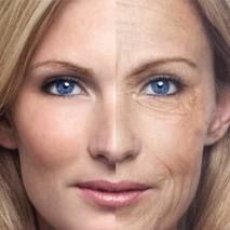Violation of biological rhythms leads to premature aging of the skin
Last reviewed: 16.10.2021

All iLive content is medically reviewed or fact checked to ensure as much factual accuracy as possible.
We have strict sourcing guidelines and only link to reputable media sites, academic research institutions and, whenever possible, medically peer reviewed studies. Note that the numbers in parentheses ([1], [2], etc.) are clickable links to these studies.
If you feel that any of our content is inaccurate, out-of-date, or otherwise questionable, please select it and press Ctrl + Enter.

Scientists have studied the role of daily biological rhythms (circadian rhythms) in the regenerative capacity of skin stem cells . Violation of these rhythms leads to premature aging of tissues and an increased risk of skin tumors, including cancer.
Scientists from the Center for Genomic Regulation conducted a study to be published in the journal Nature. It describes the role of circadian rhythms, that is, internal biological clocks, on the vital activity of a person during the day, as well as their effect on the function of skin stem cells responsible for daily skin regeneration.
Stem cells are responsible for the constant renewal of cellular elements of the skin, replacing those that have already exhausted their functionality as a result of vital activity. Proper operation of stem cells is very important for maintaining tissues in a normal state throughout the life cycle of the body. During the day, the skin is exposed to various harmful substances, for example, ultraviolet light during the day, and pathogens, such as bacteria and viruses. The main function of the skin is to protect the body from these potential pathogens, acting as a kind of barrier, separating our body from the outside world.
Scientists who participated in the study found that the activity of skin stem cells is regulated by internal biological clocks, and that the proper functioning of these clocks is necessary to maintain tissue in a healthy state. This clock regulates the activity of stem cells in such a way that, for example, during the peak of light exposure, cells are able to protect themselves from harmful radiation, while in the evening and night they divide and repair tissues, replacing damaged cells with healthy ones. Thus, a biological clock allows stem cells to divide at a time when the skin is no longer exposed to possible external damage factors and does not become so vulnerable due to the accumulation of DNA mutations that could lead to a loss of regenerative capacity or an increased risk of tumor development.
"The biological clock accurately controls the temporal behavior of stem cells, so that the system adapts to the needs of tissues depending on the time of day.If this control is broken, stem cells begin to accumulate damaged DNA, and the likelihood of cell aging and the development of skin tumors increases significantly." El Salvador Aznar Benitah, coordinator of the study.
Genes BMAL1 and period1 / 2 are responsible for controlling this rhythm, regulating cellular activity during the regeneration and rest phases. With the help of genetic manipulation of both genes, scientists have proved that the violation of biological rhythms in skin cells leads to the fact that stem cells do not know what function they perform, and as a result - premature cell aging and the accumulation of mutant DNA.
Circadian rhythms organize all our biological functions in accordance with natural cycles of light and darkness. The results of the study showed that skin regeneration, which prevents the aging and development of skin cancer, also obeys these rhythms. As we age, these biological rhythms tend to break down. Scientists believe that these failures, ultimately, can lead to violations of the regenerative potential of our tissues and the development of tumors.
In the future, scientists want to conduct additional studies to understand why the biological clock is broken with age, and whether it is possible to develop methods for restoring circadian rhythms in order to slow the process of tissue degeneration and reduce the risk of developing tumors.
